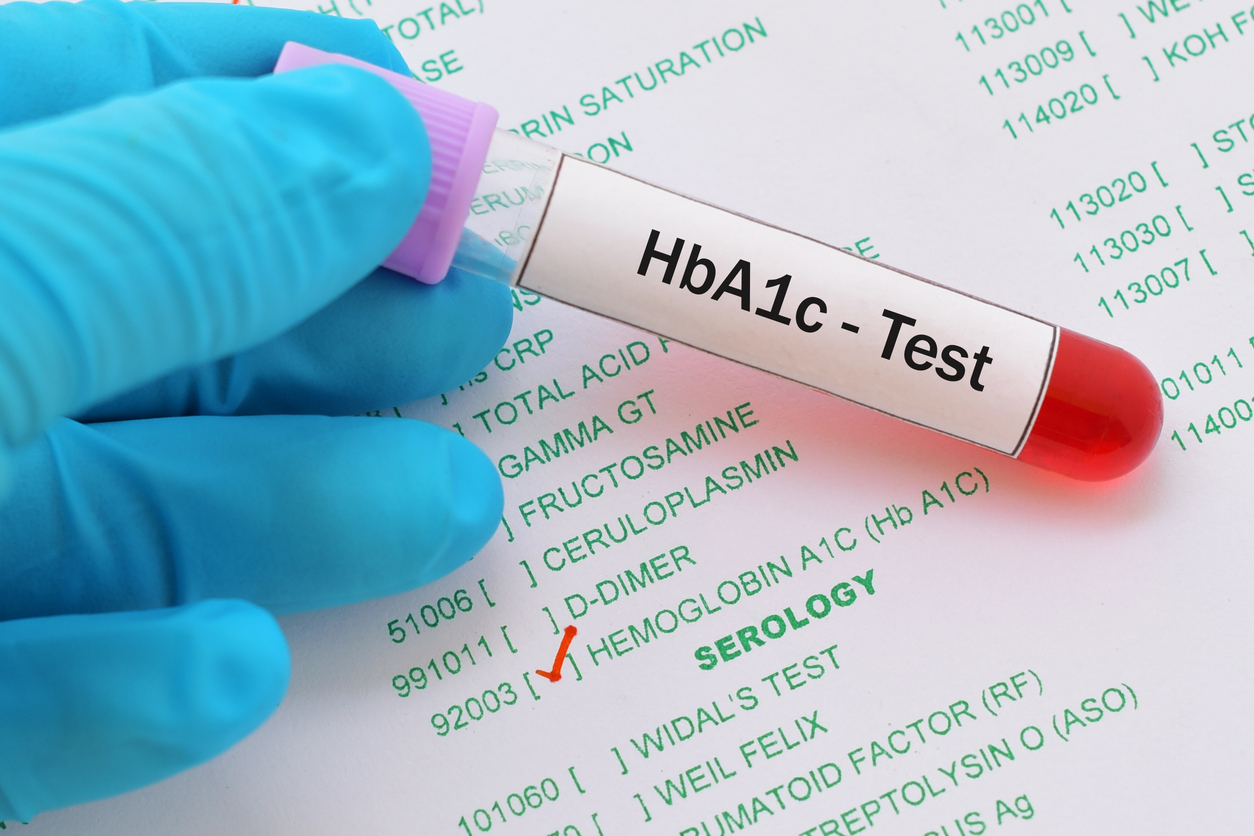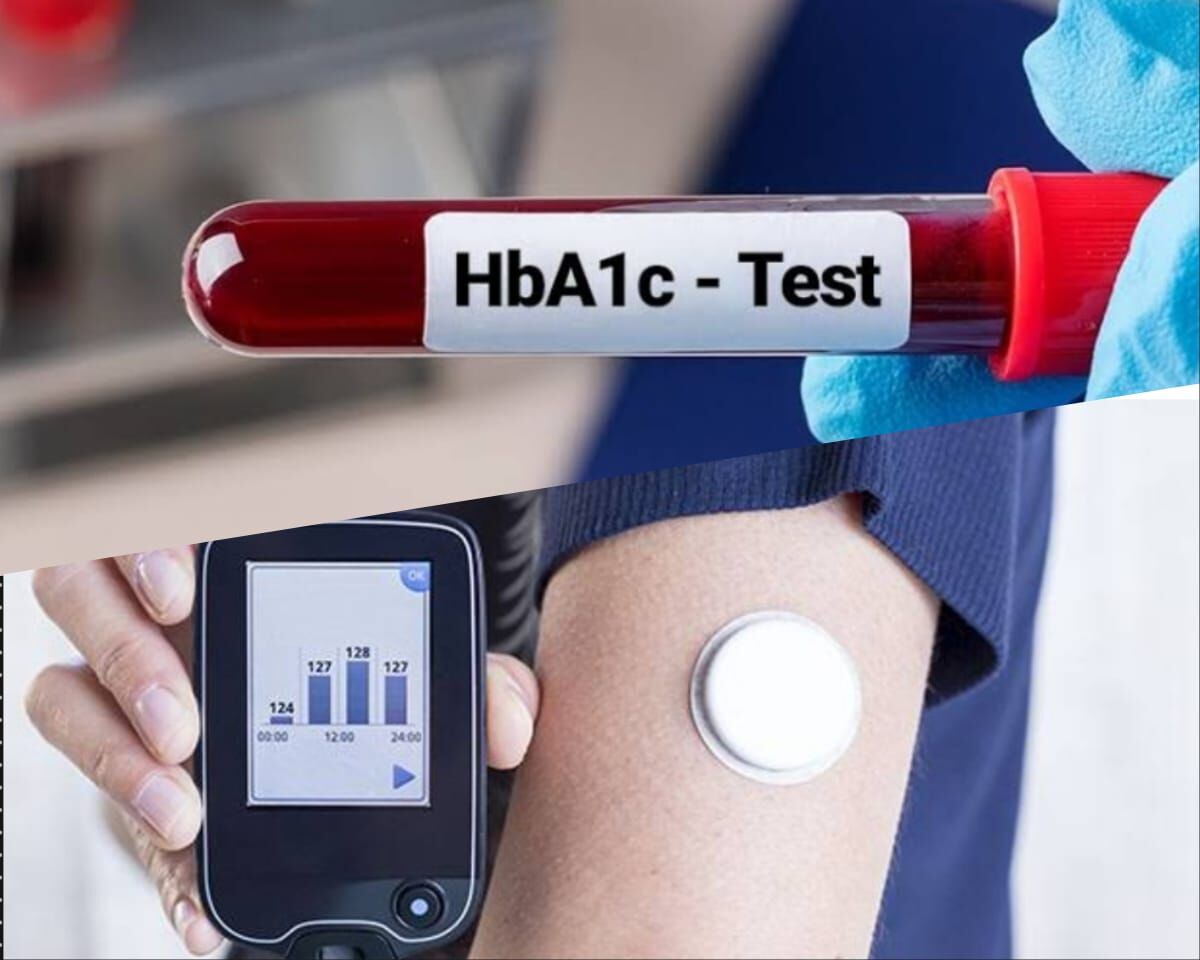The HbA1c test gauges the sugar levels in your blood over the previous two to three months. Glucose, a form of sugar in your blood utilized by your body for energy, adheres to hemoglobin during the lifespan of red blood cells. As red blood cells have a life span of approximately three months, the test assesses the average glucose levels during that period by measuring the extent to which hemoglobin is coated with glucose. In essence, the test provides an overview of your blood sugar levels over the preceding months.
This examination plays a crucial role in assessing diabetes and is essential for both initial diagnosis and ongoing treatment monitoring. The HbA1c test categorizes results into three ranges: normal, low, and high. In this blog, we’ll delve into the significance of each range and its implications for your health.
What is the purpose of the HbA1c test?

The test serves as a diagnostic tool for two health conditions:
- Prediabetes: This indicates that your blood sugar levels are on the verge, and adopting a daily exercise routine and maintaining a balanced diet can prevent its progression into type 2 diabetes.
- Type 2 diabetes: In this scenario, your blood glucose levels become elevated, and your body fails to produce sufficient insulin to transport sugar to your cells. Consequently, this leads to an increase in blood sugar levels.
Instances Where an HbA1c Test Might Be Necessary
Here are the indications that suggest the necessity of an HbA1c test:
- Prediabetes Monitoring
- Test recommended every 1-2 years for monitoring blood glucose levels.
- Diagnosed Diabetes Checkup
- Individuals with diabetes should undergo the test twice a year as part of regular health checkups.
- High Cholesterol Risk
- Annual testing advised for those with high cholesterol levels, as they are at an increased risk of developing diabetes.
- Diabetes Symptoms Indication
- HbA1c test necessary if experiencing symptoms such as frequent urination, excessive thirst, fatigue, hunger, unexplained weight loss, blurred vision, or dry skin.
- Sedentary Lifestyle Concern
- Individuals with a sedentary lifestyle, including those with desk jobs or low physical activity, should take the test to assess diabetes risk.
- Hereditary Risk
- If one parent has diabetes, periodic testing every two years is recommended to manage and monitor diabetes risk.
- Overweight and Diabetes Risk
- People who are overweight or obese are at a higher risk of developing diabetes and should undergo regular testing.
What happen during an test?

The testing procedure is straightforward. A healthcare practitioner will extract a blood sample from a vein in your arm using a small, sterile needle. The collected blood is then placed in a test tube and sent to the laboratory for analysis. You might experience a slight sting during the process, which typically lasts around 3-4 minutes.
The HbA1c test has minimal associated risks, making it a low-risk and uncomplicated procedure. All that is required is wearing comfortable clothing that allows access to your arm vein.
Reducing HbA1c levels is most effectively achieved through lifestyle modifications.
- Incorporate daily exercise into your routine.
- Adopt a balanced and nutritious diet.
- Quit smoking.
- Achieve weight loss if necessary.
- Effectively manage stress.
- Consider the use of prescribed medications.
- Regularly consult with your healthcare provider for follow-ups.
What do the results of an HbA1c test indicate?
The HbA1c test measures the percentage of hemoglobin coated with glucose. Typically, healthcare professionals use the following percentages to diagnose diabetes.
- Normal: Below 5.7%
- Prediabetes: Between 5.7% and 6.6%
- Diabetes: 6.5% or higher
If your HbA1c test shows normal results, it is advisable to undergo testing every three years. Individuals with borderline results should aim for annual testing and incorporate lifestyle adjustments, such as increased physical activity.
For those diagnosed with diabetes, biannual testing is recommended to closely monitor blood sugar levels. Additionally, it’s crucial for them to make lifestyle modifications, including regular exercise and a healthy diet.
Wrap Up
To sum up, the HbA1c test plays a crucial role in health assessments, especially for individuals at risk, such as those with prediabetes, a diabetes diagnosis, symptomatic issues, a sedentary lifestyle, or a family history of diabetes. It is advisable to have this examination annually or semi-annually as it provides valuable information about your overall health. Consistent monitoring, lifestyle modifications, and proactive measures can greatly impact the effective management of this health condition.
If you enjoyed reading this blog, please feel free to share your thoughts in the comments below.

Leave a Reply